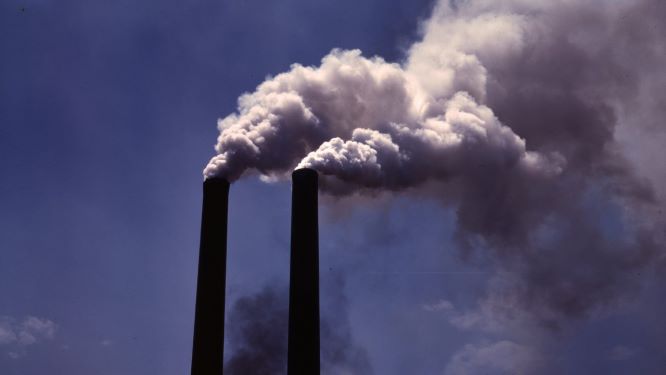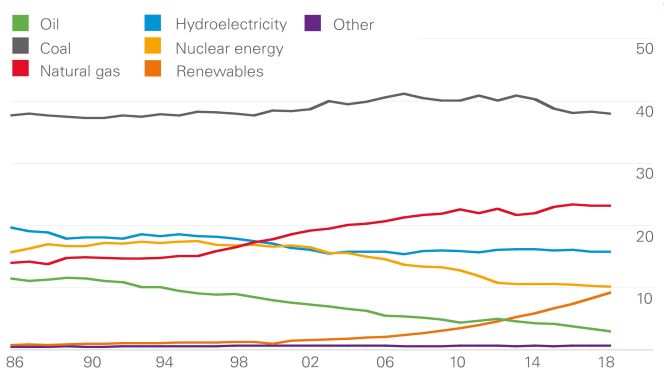

Extreme temperatures around the globe has driven a sharp acceleration in both energy demand and carbon emissions last year, according to the latest report by global oil giant BP released on Tuesday. The oil giant warned that at this pace the world risks losing the battle against climate change.
While 2018 saw further growth in renewable power sources such as wind and solar, continued growth in oil, gas and coal consumption meant that overall, the world’s energy mix remained “depressingly” unchanged, BP Chief Economist Spencer Dale said.


Carbon emissions from energy use are estimated to have grown by around 2% last year. That’s roughly the equivalent to carbon emissions associated with increasing the number of passenger cars on the planet by a third. This number is material. This increase stems pretty much directly from the growth in energy demand.– Spencer Dale, BP chief economist
At a global level, coal still accounted for the largest share of power generation at 38%, the same share as 20 years ago. Gas is the second most used fuel with a share of 23.2%, significantly higher than in 1998. The share of oil and nuclear has declined substantially over the same period. The share of renewables increased from 8.4% to 9.3%, up from only 1.3% 20 years ago.
India
India’s primary energy consumption rose by 7.9% in 2018, the highest growth rate since 2007. Coal consumption grew by 8.7% in 2018. India accounted for 70% of the global increase in coal consumption. Renewables grew 27%, the fastest growth in the last 11 years. India was the fourth largest generator of renewable energy in 2018 behind China, the US, and Germany. Despite this, the strong increase in energy demand, combined with a 0.9% reduction in carbon intensity, led to a 7% increase in carbon emissions. The growth of the renewable energy industry met some of the increased demand, but not enough to prevent an unsustainable 2 percent increase in carbon emissions.
India’s share of global energy consumption stood at 5.8%, however, its global coal consumption is at 12%. The country reported 5.3% increase in oil consumption and therefore registered an addition of 7% increase in emissions since 2007.
Other Highlights:
The report resonates with the erratic weather which India has started experience like 48-degree heat in Indian capital recently and stronger cyclones in eastern coasts, floods in south India, persistent heat waves in Southern, Western, and Northern regions in India. IPCC report says that Bangladesh and India account for 86 percent mortality from tropical cyclones across the world. While these climactic adversities put a huge weigh on Indian reserves, it also peaks the need to electricity to dispel the effects of heat, purify water, reconstruction, health facility maintenance in case of disease epidemics in heavily populated areas of the country.
BP’s report echoes the findings of other energy use and carbon emission surveys. The findings also lend credence to the conclusion of UN scientists that the world’s governments are a long way from preventing global temperatures from rising 2 degrees Celsius.
In a significant move toward advancing green energy and industrial growth in the state, Himachal…
Golabl chemical conglomerate BASF has announced that its now offering the world’s first biomass-balanced polyethersulfone…
In a crucial stint to bolster the biogas sector and sustainable dairying in the country,…
TotalEnergies SE has received approval to proceed with its Middlebrook solar and battery project in…
Andhra Pradesh Chief Minister Chandrababu Naidu has inaugurated the Rs 1,000-crore green hydrogen plant of…
The BITS Pilani has developed an innovative solution for managing landfill leachate, domestic septage, and…